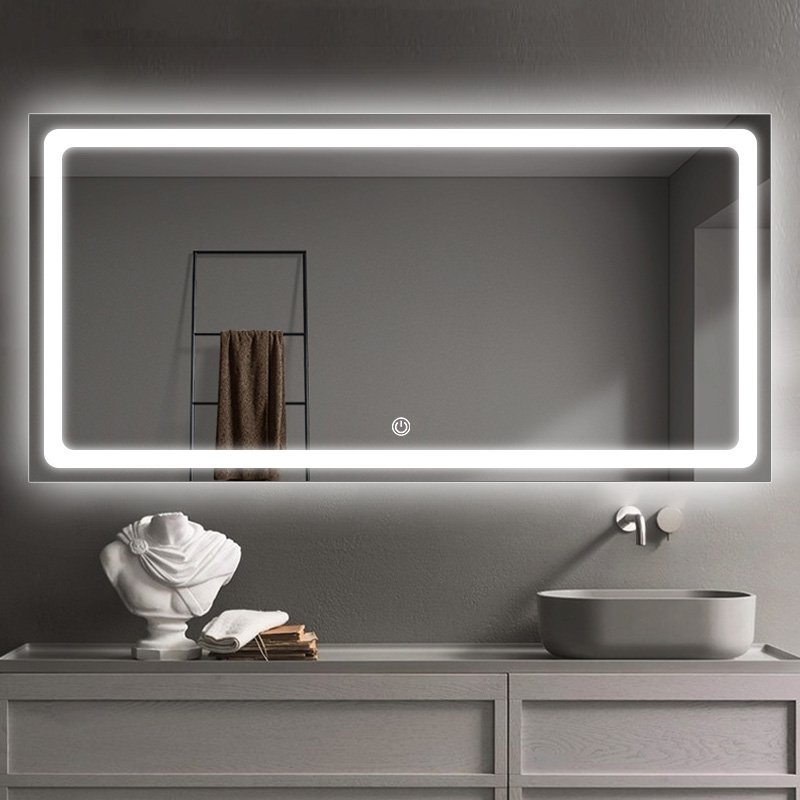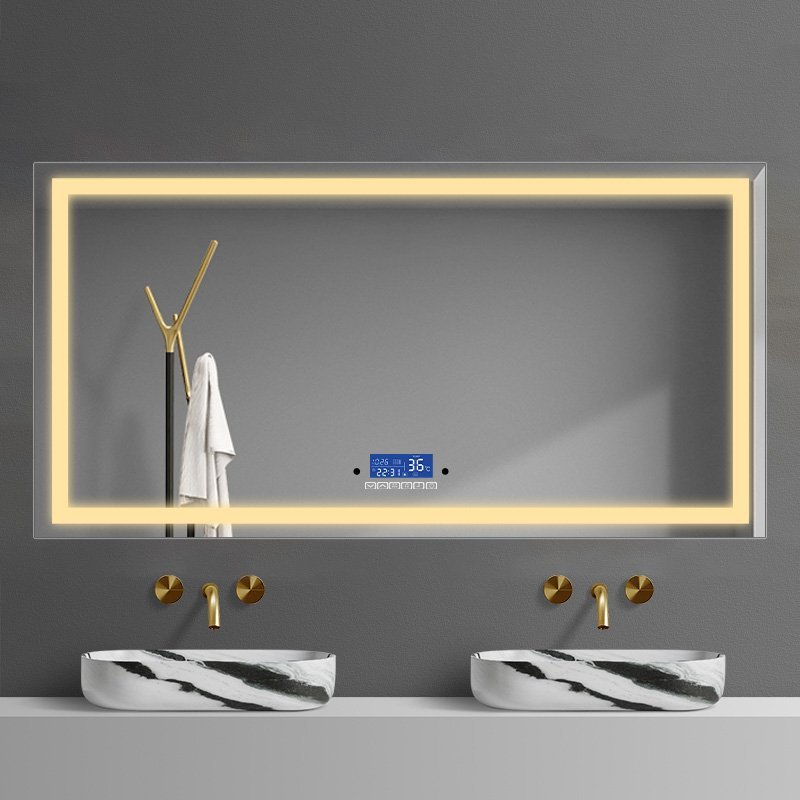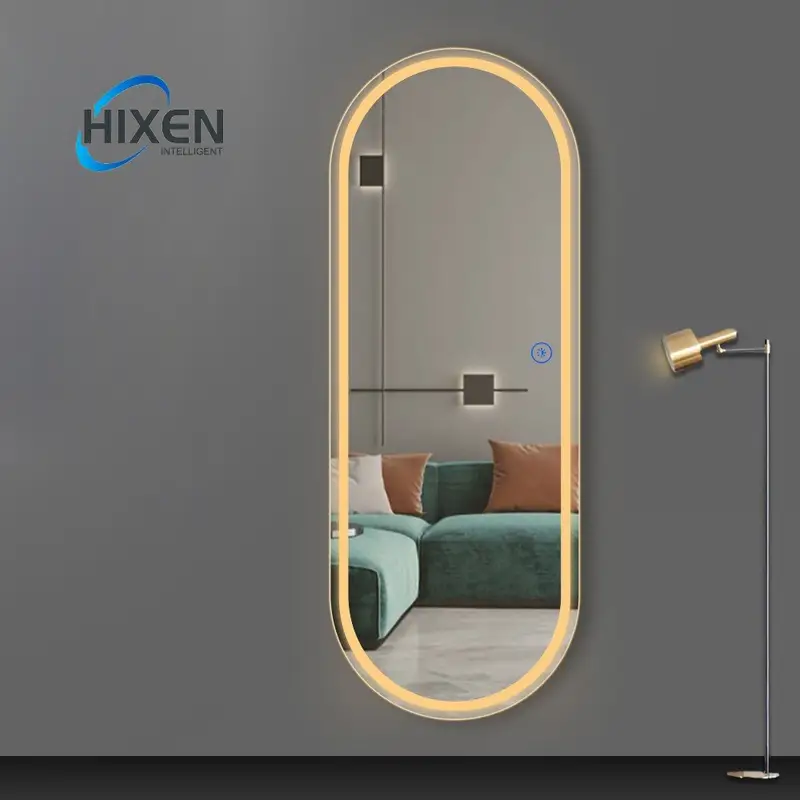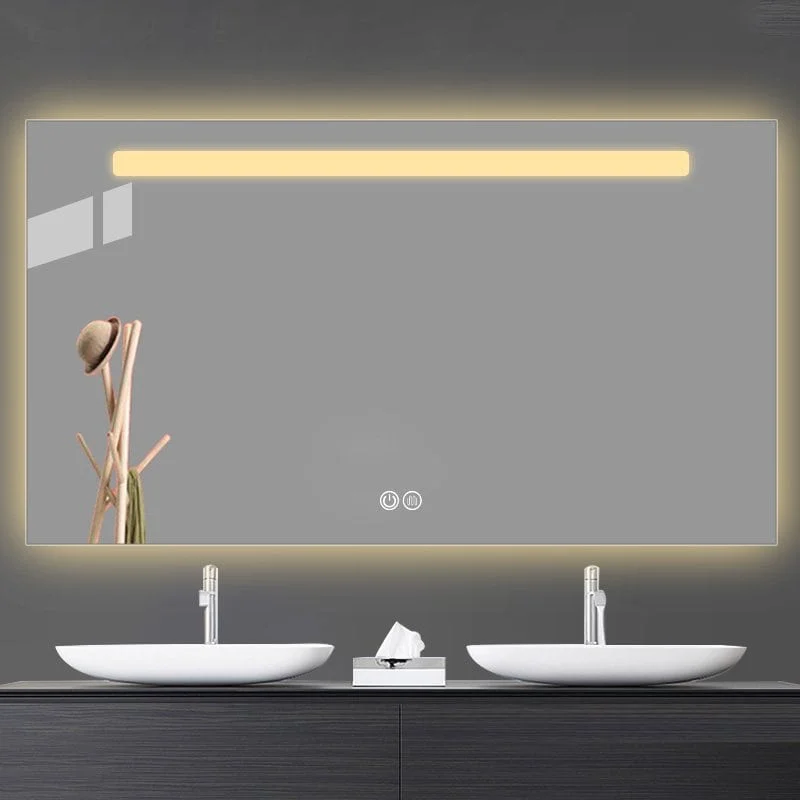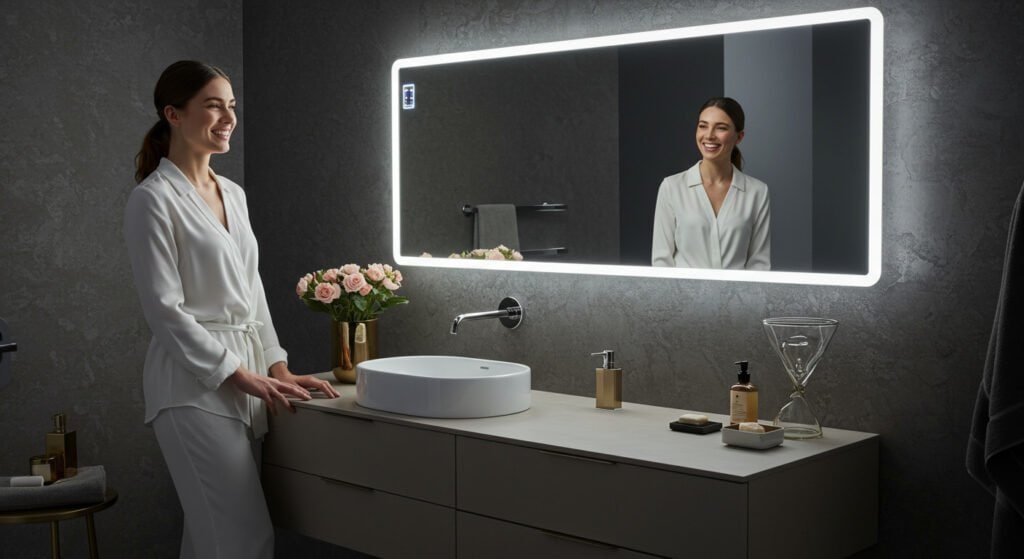|
Получение вашего Троицкий аудио Игрок готов ...
|
Tired of foggy bathroom mirrors and poor lighting during your morning routine? Traditional mirrors offer limited functionality, creating frustration when you need clear visibility most. Smart mirrors solve these common problems while adding convenience to your daily life.
A smart mirror is a technologically enhanced mirror that combines traditional reflection capabilities with digital features such as LED lighting, anti-fog technology, Bluetooth connectivity, and touch controls. These innovative bathroom smart mirrors revolutionize personal spaces by providing practical solutions to everyday challenges.
Let’s explore what makes these innovative mirrors truly “smart” and how they can transform your space.
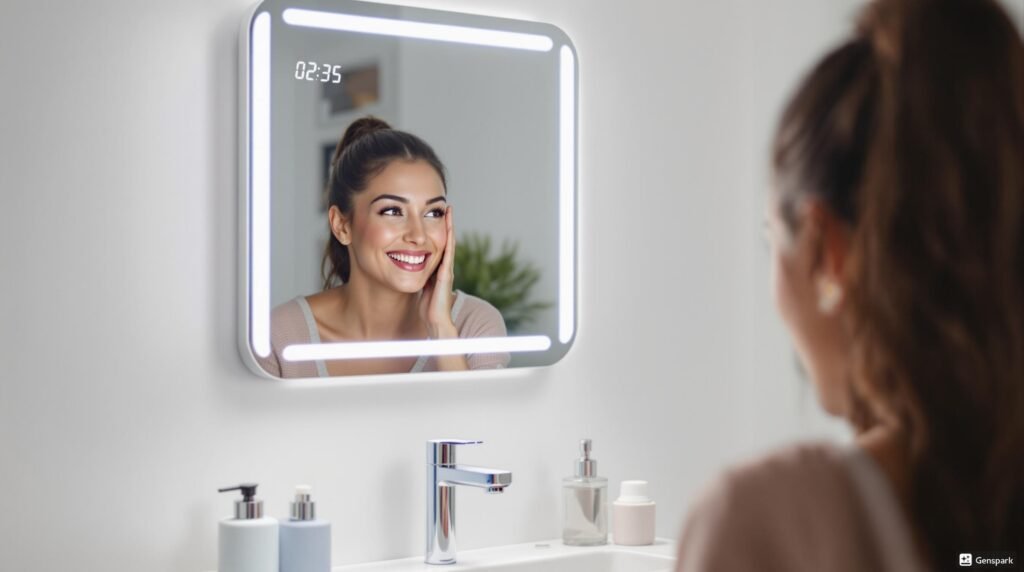
Что делает умное зеркало?
Smart mirrors fit into your life, solve problems, and make your life better in the bathroom and bedroom. A good smart vanity mirror is a traditional vanity mirror with modern technology. It has adjustable lighting, anti-fog, время, weather, and entertainment. It helps you do things and makes your life better in the bathroom and bedroom.
The practical applications of smart mirrors extend throughout the day. During morning routines, the anti-fog feature ensures clear visibility immediately after showering, while adjustable lighting provides perfect illumination for makeup application or shaving.
Touch screen smart mirrors allow users to check weather forecasts and news headlines while preparing for the day. In bedroom installations, smart mirrors can function as information hubs, displaying calendar appointments, Обновления трафика, or fitness metrics.
Where this technology really shines is in bathrooms. Humidity and lighting have always been a problem in these areas. For guys like Tony, the smart mirror is a great example of marrying practical functionality with cutting-edge technology that solves a real problem for the user, not just using technology for technology’s sake.
What Core Features Do Smart Mirrors Offer?
The modern smart LED mirror is so much more than a mirror. It’s a piece of technology that brings intelligence to your bathroom and bedroom.
Smart mirrors often have LED lighting with adjustable brightness and color temperature, anti-fog technology, touch or motion sensors, Bluetooth speakers, digital clocks, and temperature displays. More advanced models have voice control, smartphone integration, and personalized user profiles.
LED lighting is a key component of smart mirror technology. The lights are typically around the perimeter of the mirror or are backlit. The even lighting eliminates shadows when you’re trying to groom yourself.
This lighting can often be adjusted between warm, neutral, and cool tones to match different activities and preferences. The anti-fog system uses either a heating element behind the mirror or a special coating that prevents condensation from forming during hot showers.
And the digital interface, whether it’s touch-sensitive or motion-activated, allows you to control all these functions intuitively without leaving fingerprints all over the reflective surface. For commercial applications like hotels or luxury apartment buildings, these technological benefits create a tremendous amount of differentiation in the amenities offered.
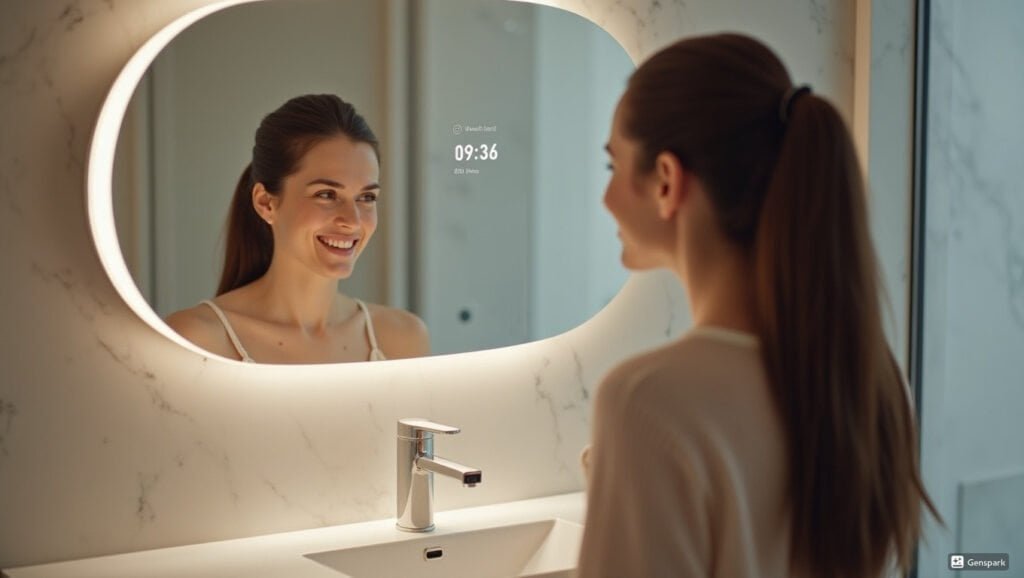
How Does Smart Mirroring Work?
The technology behind smart mirrors involves specialized hardware components and advanced software systems that turn a mirror into an interactive surface.
An ordinary smart mirror uses an ordinary silver mirror mirror surface, which is turned into a glass surface after utilizing technology to process the backside, after which a small LCD display is mounted. The advanced version of the smart mirror utilizes a two-way mirror (also called a half-silvered mirror) with an LCD display positioned behind the glass surface. This configuration allows the mirror to act as both a reflective surface and as a digital This configuration allows the mirror to act as both a reflective surface and a digital display, displaying information while maintaining its reflective properties when the display is dimmed.
The operational mechanics involve several coordinated systems working together. The glass smart mirror panel itself consists of specialized material that allows light to pass through in one direction while reflecting from the other surface. Behind this panel, LED displays or monitors connect to small computing systems—often Raspberry Pi units in smart mirror projects or custom circuit boards in commercial products.
These computers run specialized software that controls information display, user interface, and connected features. Sensors integrated around the mirror’s frame detect user presence, gestures, or touch inputs, translating these interactions into commands for the system.
For high-end models with smart view mirror screen technology, advanced ambient light sensors automatically adjust display brightness based on room lighting conditions, ensuring optimal visibility without compromising the mirror’s reflective function. The entire system connects to home networks via WiFi or Ethernet, enabling features like weather updates, calendar synchronization, or integration with other smart home systems.
How Do Smart Mirrors Transform Bathroom Experiences?
Smart mirrors change the way people interact with their bathroom space. They turn the daily routine from functional to experiential.
A well-designed bathroom smart mirror helps you groom better by providing the right lighting for the task at hand. It solves the problem of fogging when you’re taking a shower. And, it adds entertainment with built-in speakers. It saves time and adds convenience. It solves the problems and eliminates the annoyances of a regular mirror.
It’s when you’re getting ready in the morning. You can see yourself clearly no matter how much steam there is while you listen to news briefings or music. The adjustable lighting is perfect for doing your makeup or shaving. Cool white light is ideal for makeup because it gives you true color representation. Warm light is perfect for your evening skincare routine because it’s relaxing.
For construction companies and property developers, installing smart mirrors adds a lot of perceived value to the bathrooms without requiring a lot of structural changes. It gives them something to talk about that buyers or tenants will remember. It differentiates their properties in a competitive market. For a technical director like Tony, the frameless smart mirror options give him the best of both worlds. He gets the sleek look he wants, but he also gets the advanced functionality that makes the bathroom more visually appealing and more practically useful.
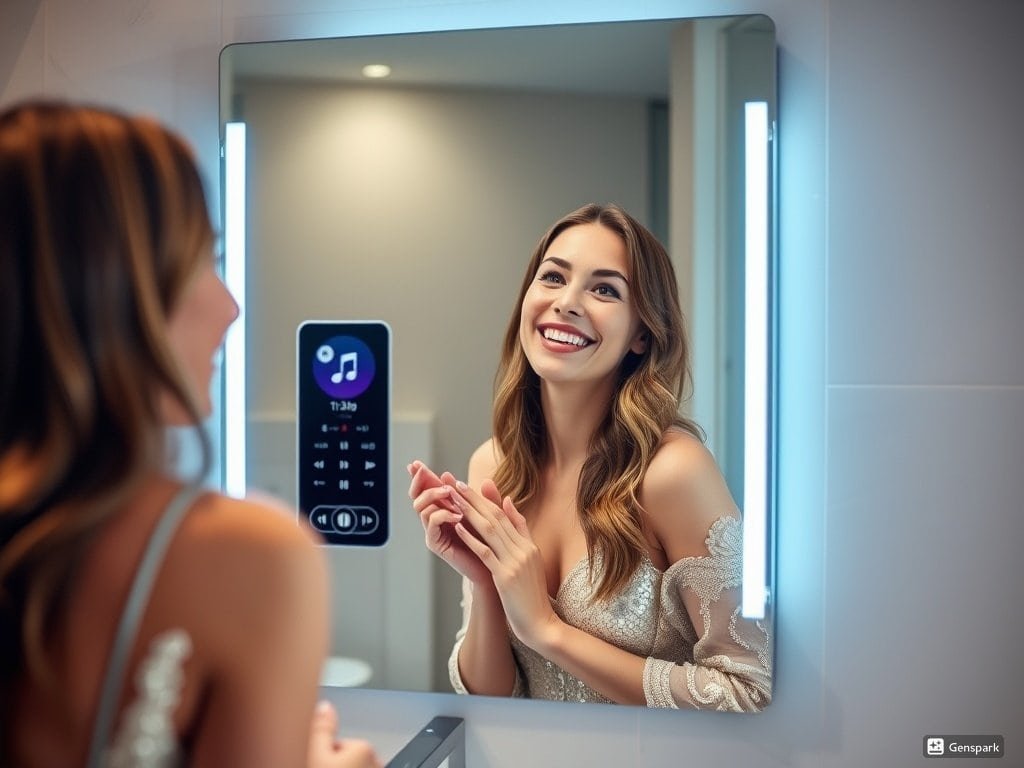
Do Smart Mirrors Need Electricity?
All smart mirrors require electricity to power their integrated features such as LED lighting, touch screens, anti-fog heating elements, and digital displays. Most commercial models connect to standard household electrical systems. There are some battery-operated, portable versions available, but they have limited functionality.
When planning for smart mirror installation, electrical considerations become paramount. Most wall smart mirrors require professional installation with dedicated electrical connections. They typically need standard 120-240V power supplies, depending on regional standards.
Power consumption varies widely based on the features. Basic LED-illuminated models might consume 30-50 watts. Advanced models with heating elements, displays, and speakers could draw 100-200 watts at peak operation. For permanent installations, electricians usually run dedicated circuits to power these devices, especially in bathroom environments where electrical safety codes have specific requirements.
Some manufacturers now offer energy-efficient smart LED mirror options that incorporate power-saving features like motion sensors that activate displays only when someone stands before the mirror, or automatic timers that shut down functions after periods of inactivity. For commercial installations in hotels or luxury developments, the additional electrical requirements must be factored into overall infrastructure planning, potentially requiring electrical system upgrades in renovation projects.
What Is the Difference Between Smart Mirror and Normal Mirror?
Understanding the differences between regular mirrors and smart mirrors will help you understand the value proposition when you’re trying to sell people on upgrading.
Regular mirrors reflect. Smart mirrors reflect, but they also have integrated technology such as lights, anti-fog heating, touch interfaces, и информационные отображения. It’s this integration of technology that turns a mirror from a passive object into an interactive device that enhances your life.
It’s not just what they do that’s different. It’s also how they’re made. A regular mirror is just a piece of glass with a reflective backing. A smart mirror is a complex sandwich of half-silvered glass, display panels, circuit boards, and lighting systems.
This is why there’s a huge price difference. A good regular mirror might cost you $100 к $300. A smart mirror starts at $500 and can go up to $2,000 or more for the really fancy ones with all the bells and whistles. The user experience is different, too. With a regular mirror, you need external lighting. A regular mirror can fog up if it’s in a humid environment.
С другой стороны, a smart mirror has its own lighting. It has anti-fog capabilities. It can display the temperature. It can even connect with your smart home system. If you’re a company like BFY that focuses on premium bathroom solutions, this is a huge opportunity to sell people on a major upgrade that makes their bathroom look and work better. The frameless smart mirror trend particularly exemplifies this evolution, providing sleek, modern designs that transform bathrooms from purely functional spaces into sophisticated environments.

Каковы недостатки умных зеркал?
Now, don’t get me wrong. There are some downsides to smart mirrors you need to be aware of.
Smart mirrors cost more upfront. They’re more complex. They can break. They need to be maintained. They use electricity, which can increase your utility bill. You might need to hire someone to install them.
For most people, the cost is the big one. A good smart mirror is going to cost you 3-5 times what a regular mirror costs. It’s expensive. The reason it’s so expensive is because of all the technology that’s built into it. It’s a big investment for most people.
The other thing is that when something goes wrong with a smart mirror, it’s not like you can just call the glass guy to come out and fix it. You have to get someone who knows how to work on the technology. If you have a smart mirror with internet connectivity, a camera, or voice recognition, you now have a potential privacy issue.
Durability questions arise regarding electronic components operating in humid bathroom environments, with legitimate concerns about longevity compared to traditional mirrors that may last decades without issues. The power dependency also means smart mirrors become non-functional during electrical outages, whereas traditional mirrors continue working regardless of power availability.
If you’re a business, you have to think about all these things. Is it worth it to have a smart mirror in your business? Is it worth it to have a smart mirror in your hotel? Is it worth it to have a smart mirror in your restaurant? As a developer, you have to think about all these things.
What Is the Difference Between Smart Copy and Smart Mirror?
These similar-sounding terms represent distinct technologies with different applications and purposes in modern digital ecosystems.
Smart copy refers to AI-assisted content creation and text duplication tools, while smart mirrors are physical devices combining reflective surfaces with digital displays and interactive features. Despite sharing the “smart” designation, these technologies serve entirely different purposes in separate domains.
The difference is that one is software and the other is hardware. Smart copy is software, usually AI-driven, that helps you with content management and creation. Smart mirrors are actual physical products you can buy for your bathroom, bedroom, or other living spaces.
These systems analyze existing text patterns to produce similar content or optimize messaging for specific audiences. In contrast, smart mirror technology integrates physical reflective surfaces with digital components to enhance traditional mirror functionality.
Smart mirror projects often involve touch screen capabilities, LED lighting, and information displays to turn regular reflective surfaces into interactive displays. Both are cool uses of today’s computing power, but they solve totally different problems.
For businesses like BFY MIRROR, the distinction is important when dealing with international clients who might see both terms in different contexts during their research. Knowing the difference will help avoid confusion when discussing products, especially with someone like Tony who might be using both in different aspects of his business.

How Do You Choose the Right Smart Mirror for Your Needs?
Choosing the right smart mirror requires you to consider the technical specifications and how it will look in your space.
When choosing a smart mirror, evaluate the intended location’s lighting conditions, available electrical connections, space dimensions, and primary user needs. Consider features like IP rating for water resistance, lighting quality, connection options, and certification standards that ensure safety and compatibility.
Start by measuring your space. Measure the width and the height of the space where you want to put the mirror. Don’t forget to account for any accessories or cabinetry. If you’re putting the mirror in the bathroom, make sure to get a mirror with at least an IP44 rating to protect against splashing water.
Pay attention to the quality of the lighting. Look for smart LED mirrors with a high CRI (Color Rendering Index) rating. You want a CRI of 90 or above so you can see your colors accurately. This is important if you’re doing your makeup or grooming. Round smart mirrors work well in smaller spaces or as an accent piece. If you want more screen real estate, go with a larger, rectangular model.
If you’re putting a smart mirror in your bedroom, look for one that dims so you can use it at night. Конечно, your budget will dictate your choice. You can find basic models for around $300, while the top-of-the-line models with all the bells and whistles can run you over $2,000.
If you’re looking at a smart vanity mirror for doing your makeup, look for one that has different lighting settings and magnification. If you’re doing a commercial project like Tony, you need to pay attention to certification. Make sure the mirror you’re looking at has the proper certifications like UL, CE, or RoHS.
What Are the Best Smart Mirrors?
Knowing which smart mirrors are the best can help you make a smart choice when you’re looking to buy a smart mirror for your bathroom.
The best smart mirrors have excellent build quality, reliable electronics, lots of features, and an easy-to-use interface. The top smart mirrors usually come from established companies that have been making bathroom technology for a while. They also back up their products with a solid warranty.
When you get into the high-end smart mirrors, they have high-resolution displays that are anti-glare so you can see them without losing the reflection.
The best frameless smart mirrors have edge-to-edge glass with no visible hardware. The lighting is top-notch with a CRI of 95 or higher and multiple color temperature settings to make sure you see your skin tones and makeup colors accurately.
The best touch screen smart mirrors respond instantly to your touch and are resistant to water damage and fingerprints. For bathroom installations, the best smart mirrors have an IP64 or higher water resistance rating.
The best smart vanity mirrors have magnification zones with distortion-free glass for detailed grooming. I can’t give you specific brand recommendations without doing a detailed comparison, but the best smart mirror projects I’ve seen use electronics from established manufacturers and quality mirror glass.
For someone like Tony who does upscale construction projects, it’s worth it to spend a little more for the best because you’ll have happier customers and fewer warranty issues down the road.
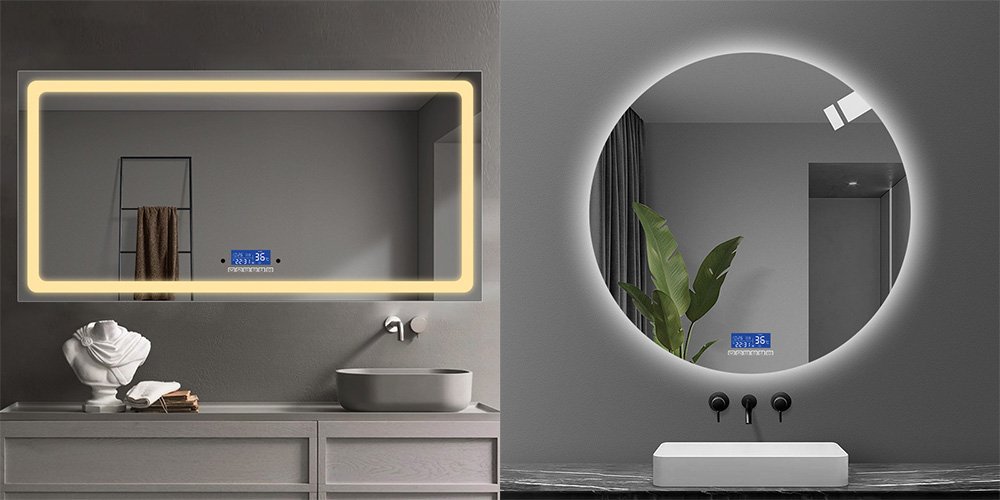
How to Make a DIY Smart Mirror?
Creating a custom smart mirror project provides a cost-effective alternative to commercial options while allowing complete customization of features and appearance.
You can build a smart mirror yourself using a two-way mirror, display panel, Raspberry Pi microcomputer, power supply, and a custom frame to house it all. You need basic woodworking and electronics skills, but it’s a fun project and it will save you a lot of money.
| Step | Описание |
|---|---|
| Material Selection | Use genuine two-way glass or acrylic sheet for the mirror. Repurposed monitors or TVs can be used for the display, removing the bezels and adjusting brightness to penetrate the mirror surface. |
| Computing Element | Typically involves a Raspberry Pi running MagicMirror² software, which allows customization of the display interface. |
| Frame Construction | A critical component, usually using hardwood frames with routed channels for electronics and ventilation. This impacts the final appearance. |
| Power Management | Requires careful planning, often using recessed outlets or hidden power management systems to ensure a neat setup. |
| Software Configuration | The software offers unlimited customization, displaying weather, calendars, новости, and custom information through modules. |
| Time Investment | The DIY process typically requires 15-30 hours of labor depending on experience and complexity of features. |
| Material Costs | Material costs generally range from $200 к $600, depending on the component quality and the size of the display. |
| Educational Value | For technically inclined individuals, like Tony, these projects offer cost savings and educational benefits, with professional-quality results when done properly. |
What Installation and Maintenance Considerations Apply to Smart Mirrors?
Proper installation and ongoing maintenance significantly impact both the performance and longevity of smart mirror systems in any environment.
Smart mirrors need to be securely mounted on well-reinforced walls, have professional electrical connections, and be positioned correctly to work well. You’ll also need to clean them regularly with the right non-abrasive solutions and update the software from time to time.
You need to make sure the wall is strong enough to hold the mirror. You’ll either need to find the studs or install the appropriate anchors to support the weight of the mirror, which is usually heavier than a regular mirror because of all the electronics.
You also need to pay attention to the electrical requirements. Most good smart mirrors need a dedicated circuit so you don’t overload anything. And you need to make sure it’s installed in accordance with all local electrical codes. If you’re putting it in a bathroom or another area with high humidity, you’ll need to seal it properly around the edges so moisture doesn’t get in there and cause problems with the electronics.
You’ll also need to clean it. You have to use glass cleaners that won’t damage any anti-fog coatings or the electronic components. If you’re buying a smart mirror and you don’t get a lot of documentation with it, you’ll want to ask about maintenance before you buy.
If something goes wrong, you’ll need to troubleshoot. Обычно, you’ll check the power connections first. Затем, you’ll go through the reset procedures to make sure it’s not just a software glitch. If you’re installing these in a commercial application, you’ll want to set up a regular maintenance schedule with your maintenance people or a professional technician to make sure everything stays working and you protect your investment in these high-end bathroom fixtures.
Companies like BFY MIRROR с 20 years of export experience typically provide comprehensive installation guides and maintenance protocols with their products, ensuring optimal performance throughout the mirror’s operational lifespan.
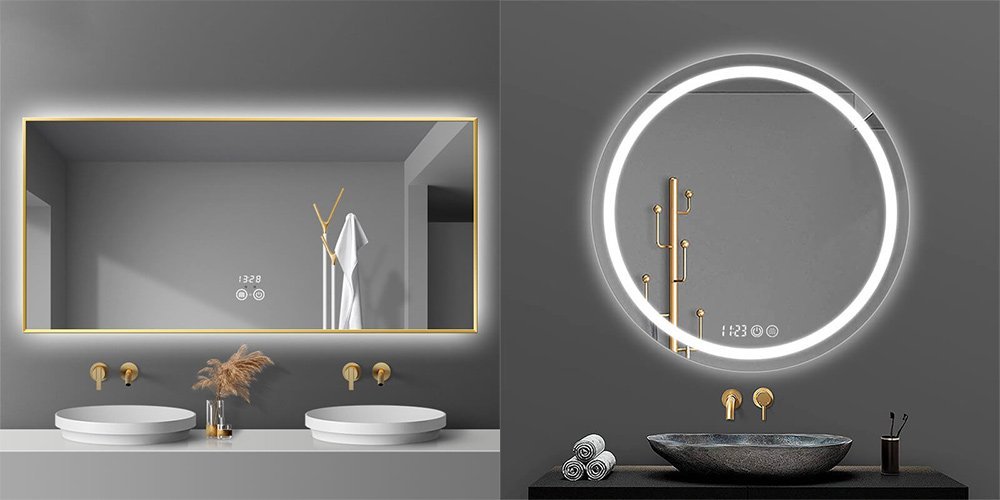
Заключение
Smart mirrors represent the perfect fusion of traditional reflection functionality with modern technology, offering practical solutions to everyday bathroom challenges while elevating the overall experience. Whether choosing a commercial smart LED mirror or embarking on a DIY smart mirror project, these innovative fixtures continue evolving with new features and capabilities.
- Каковы преимущества светодиодного зеркала?
- Какой лучший свет для тщеславного зеркала?
- Чтобы узнать, как выбрать правильное зеркало в ванной, нажмите здесь.
- Чтобы узнать, как установить зеркало выбирать здесь.
- Чтобы узнать, как выбрать зеркало правильного размера, нажмите здесь.
- Чтобы узнать, как изготовлены зеркала, нажмите здесь.
- Нажмите здесь, и вы узнаете, почему мы выглядим лучше в зеркалах.
- Нажмите здесь, вы узнаете о вершине 10 светодиодные производители зеркала для 2024.





